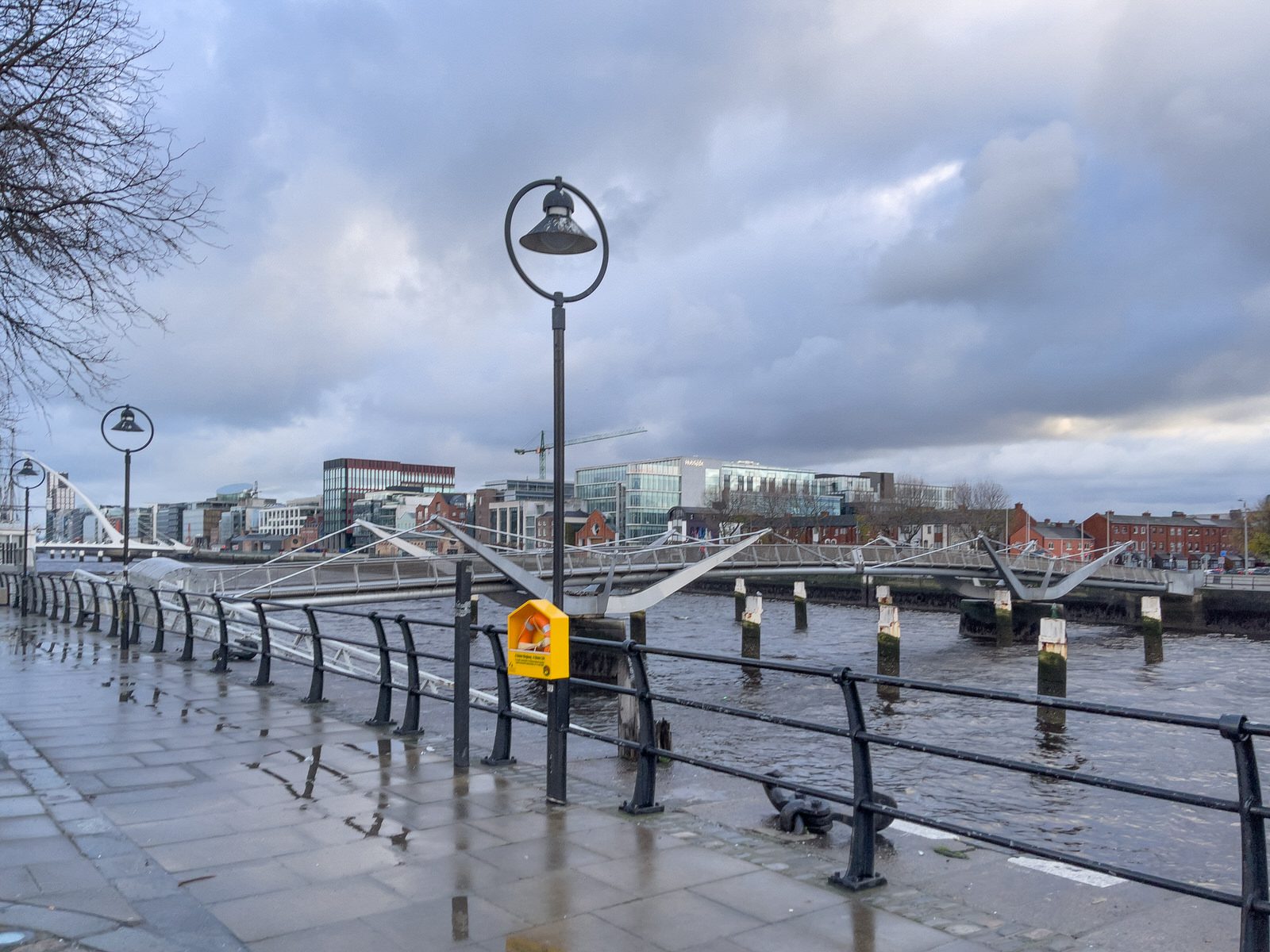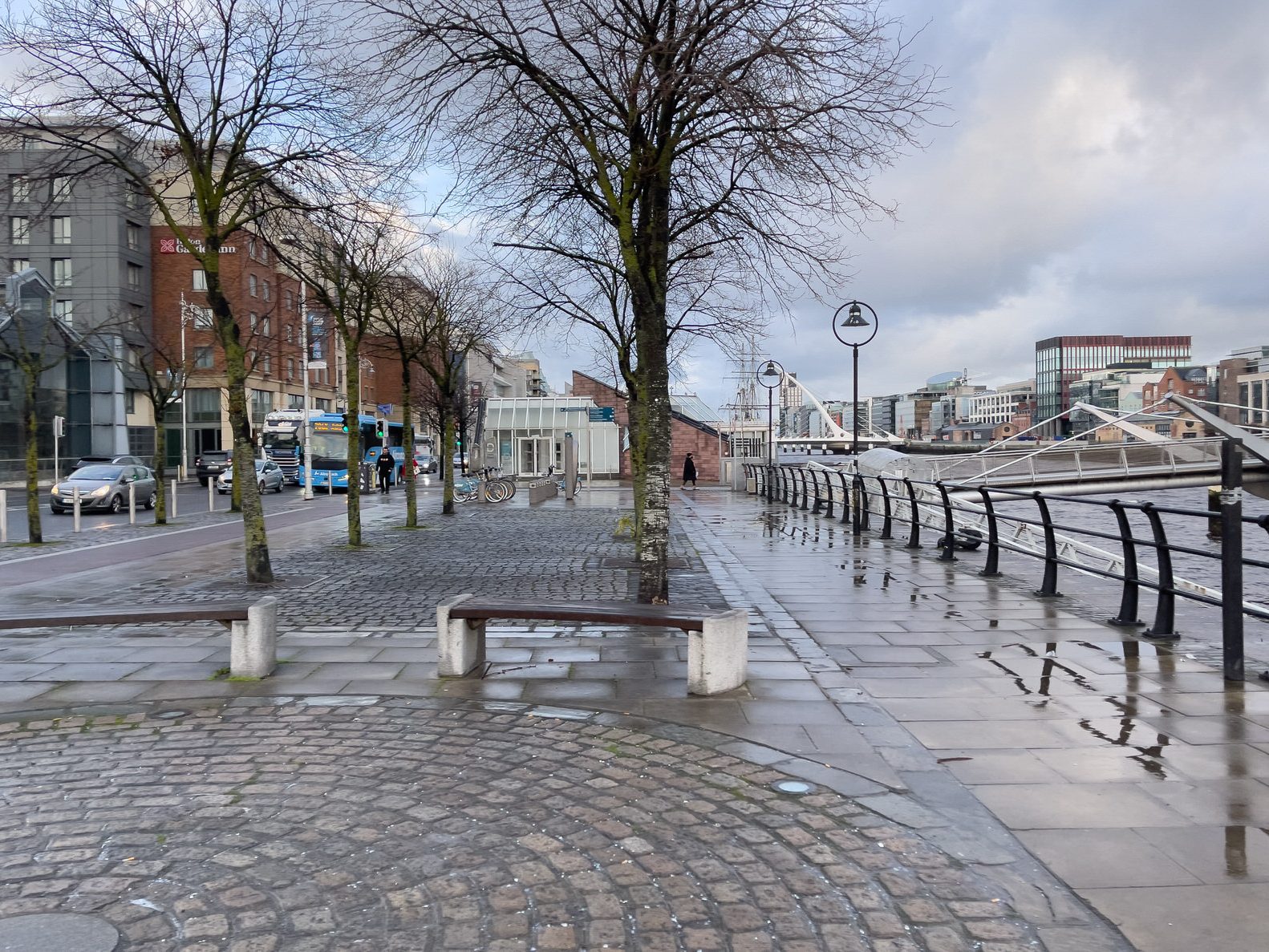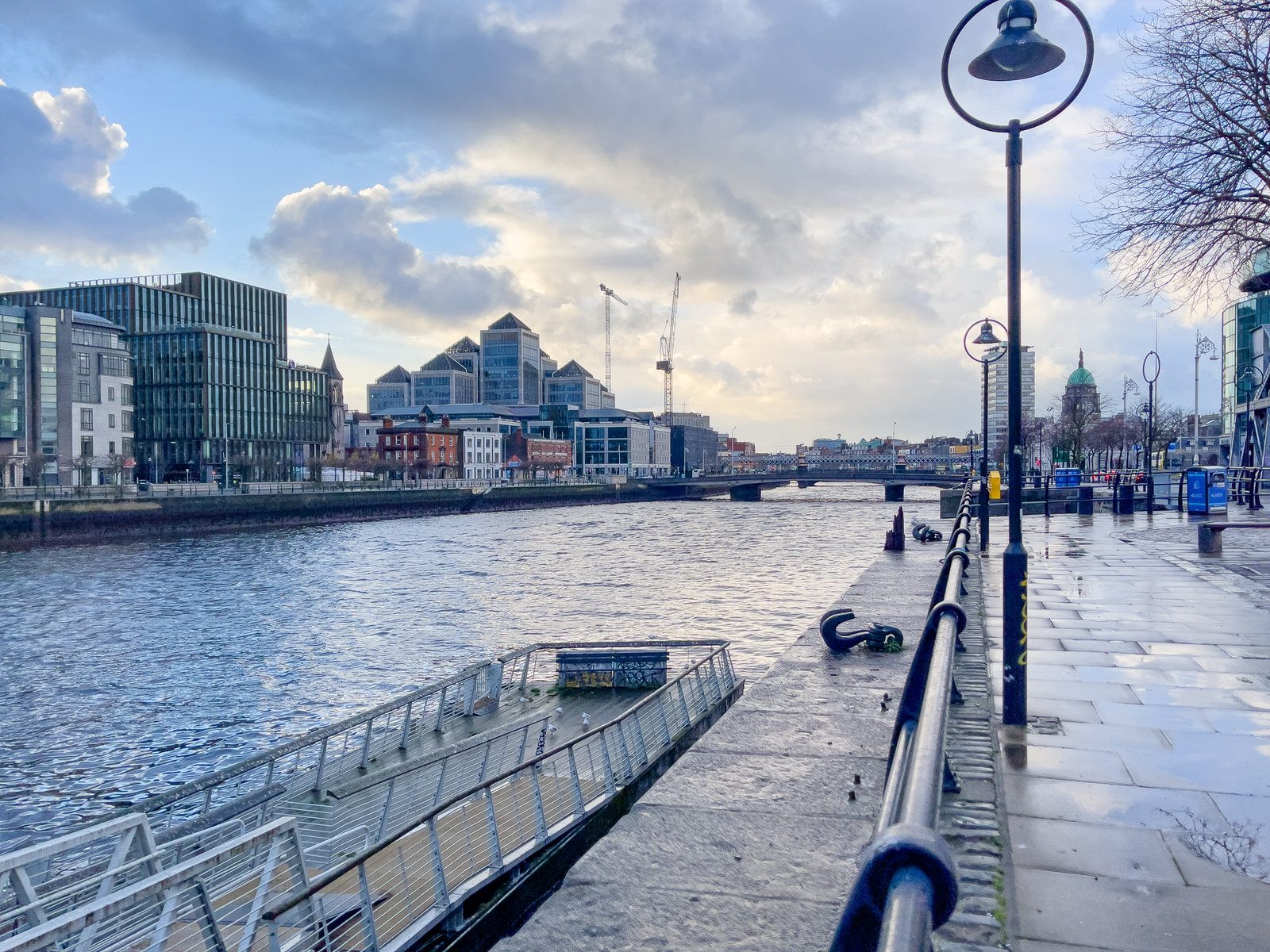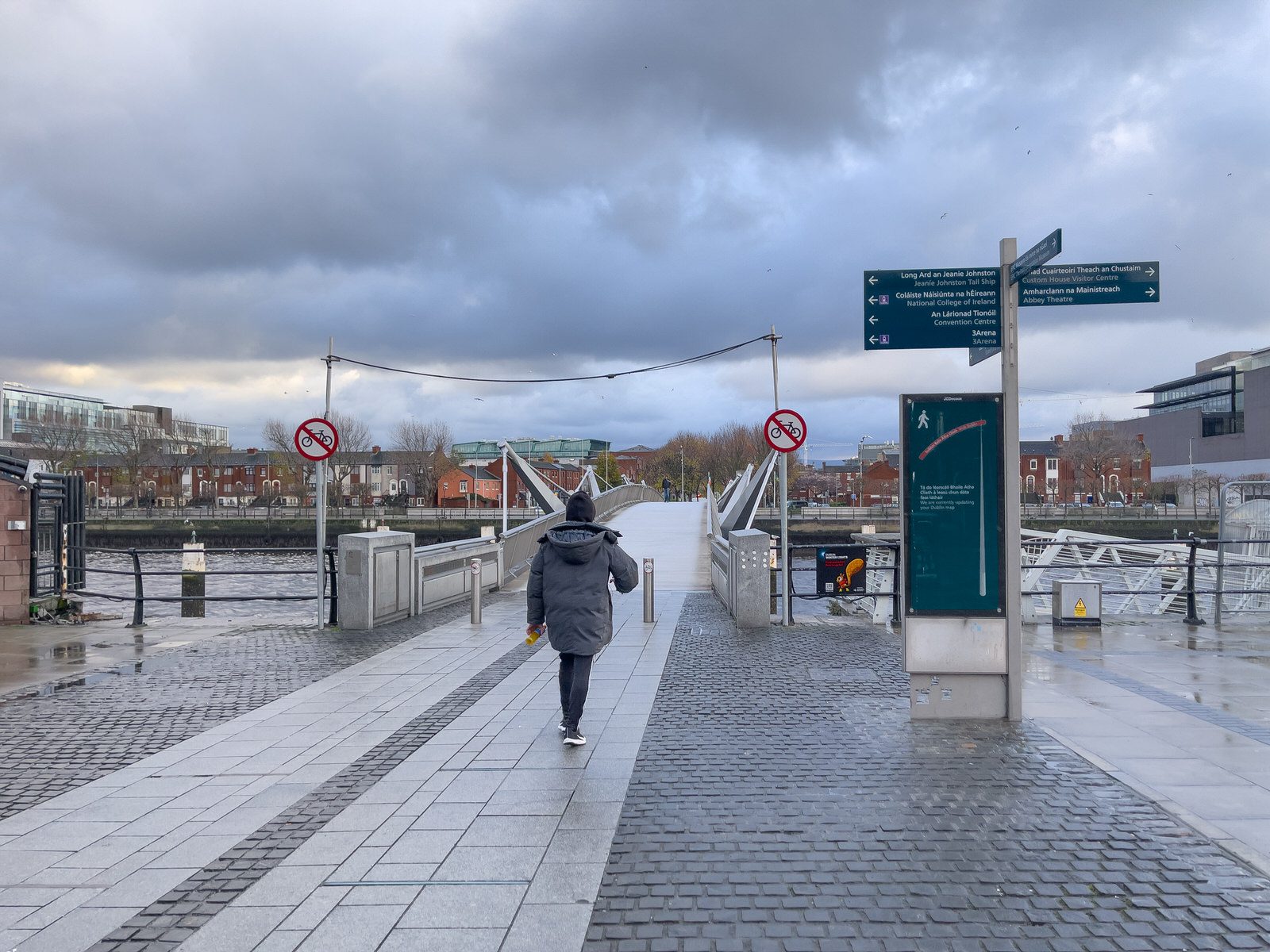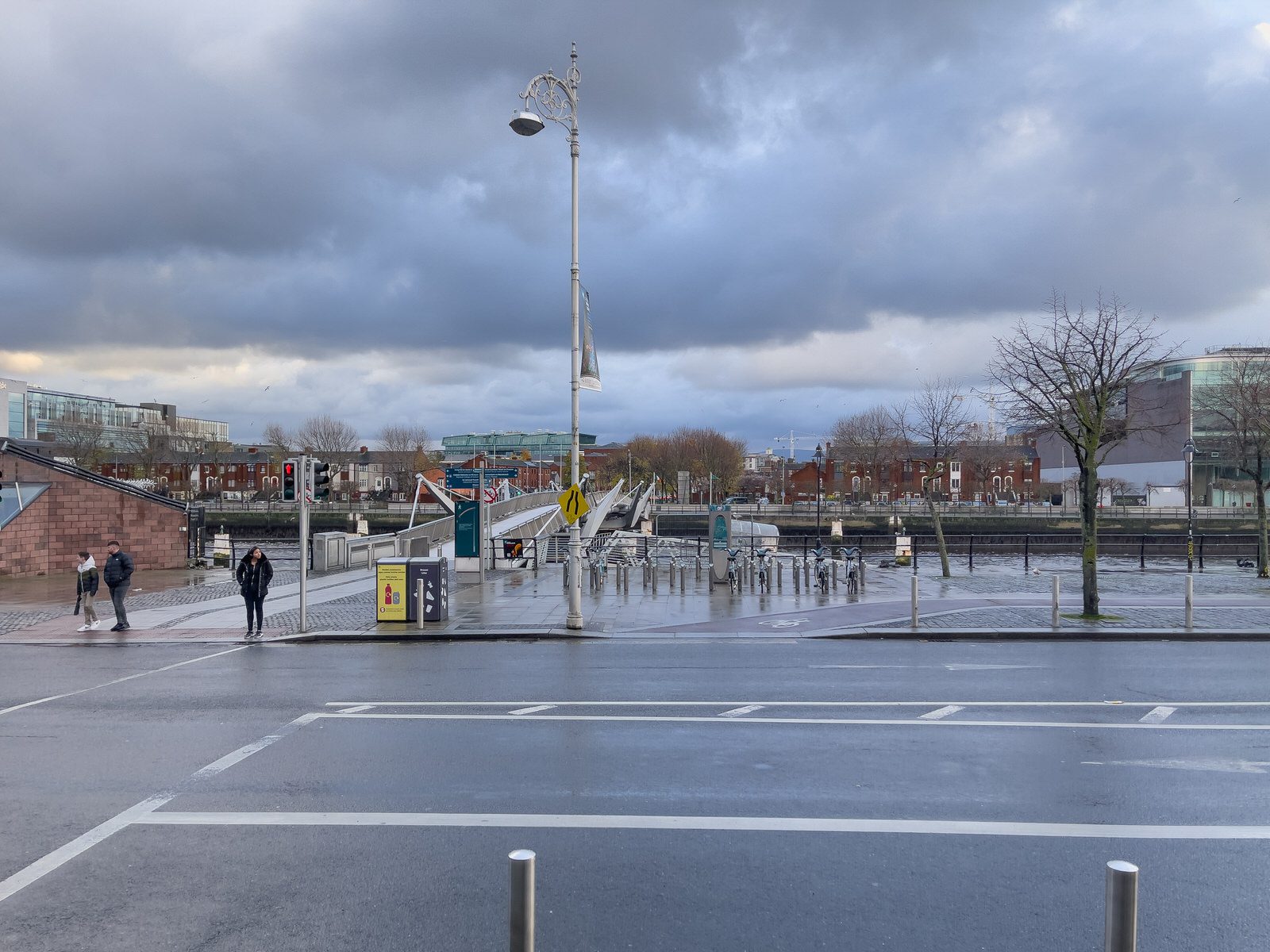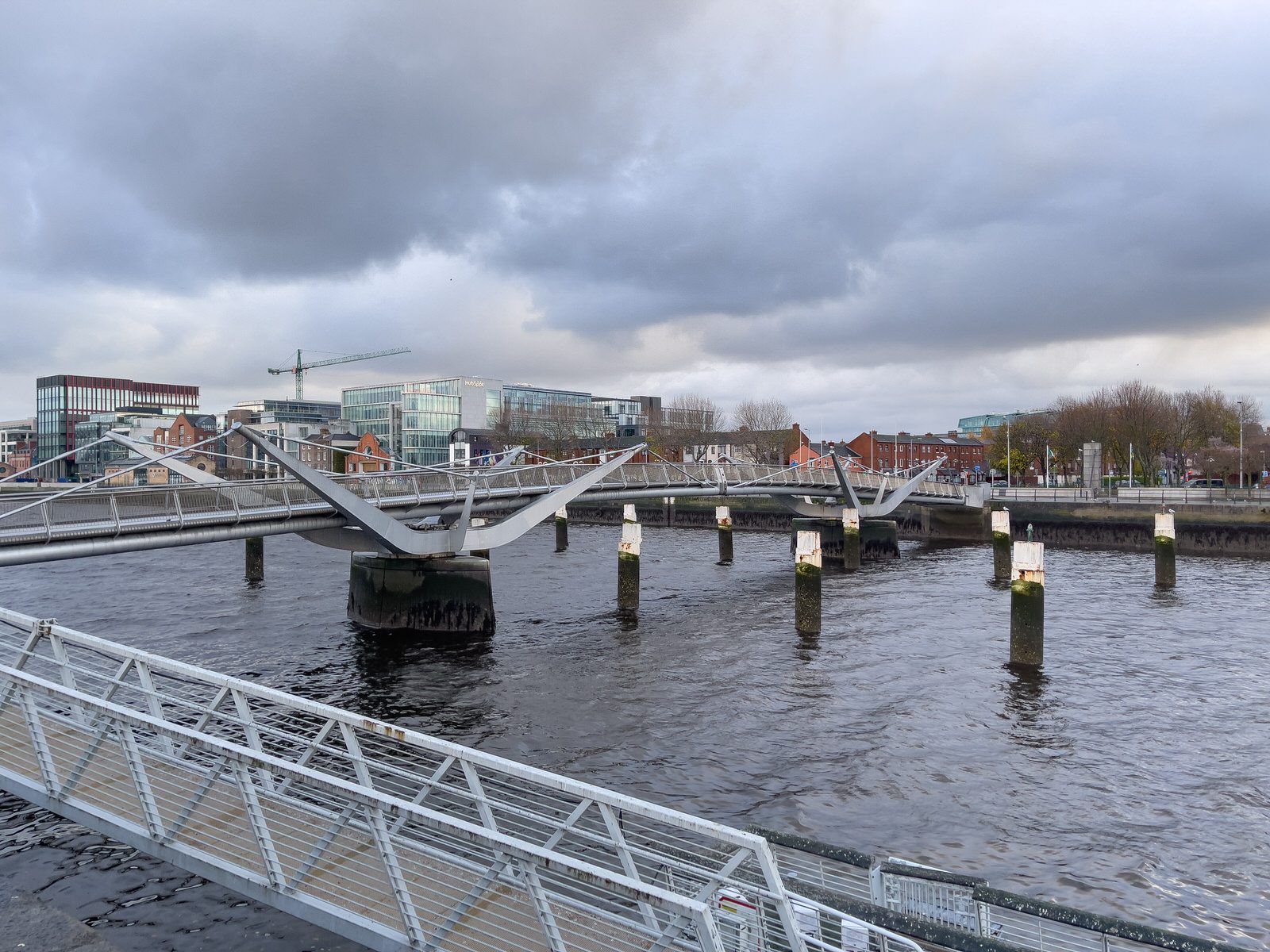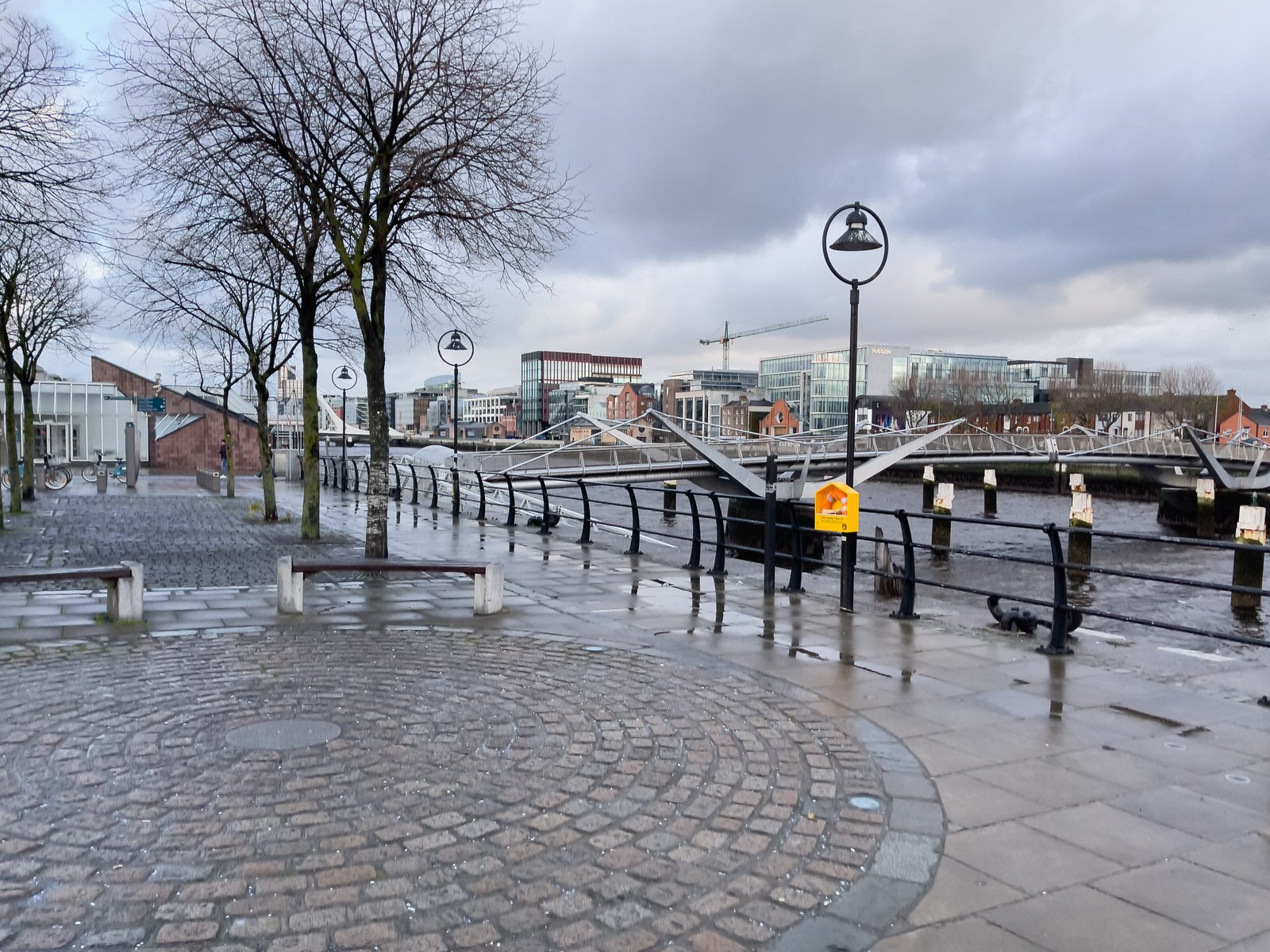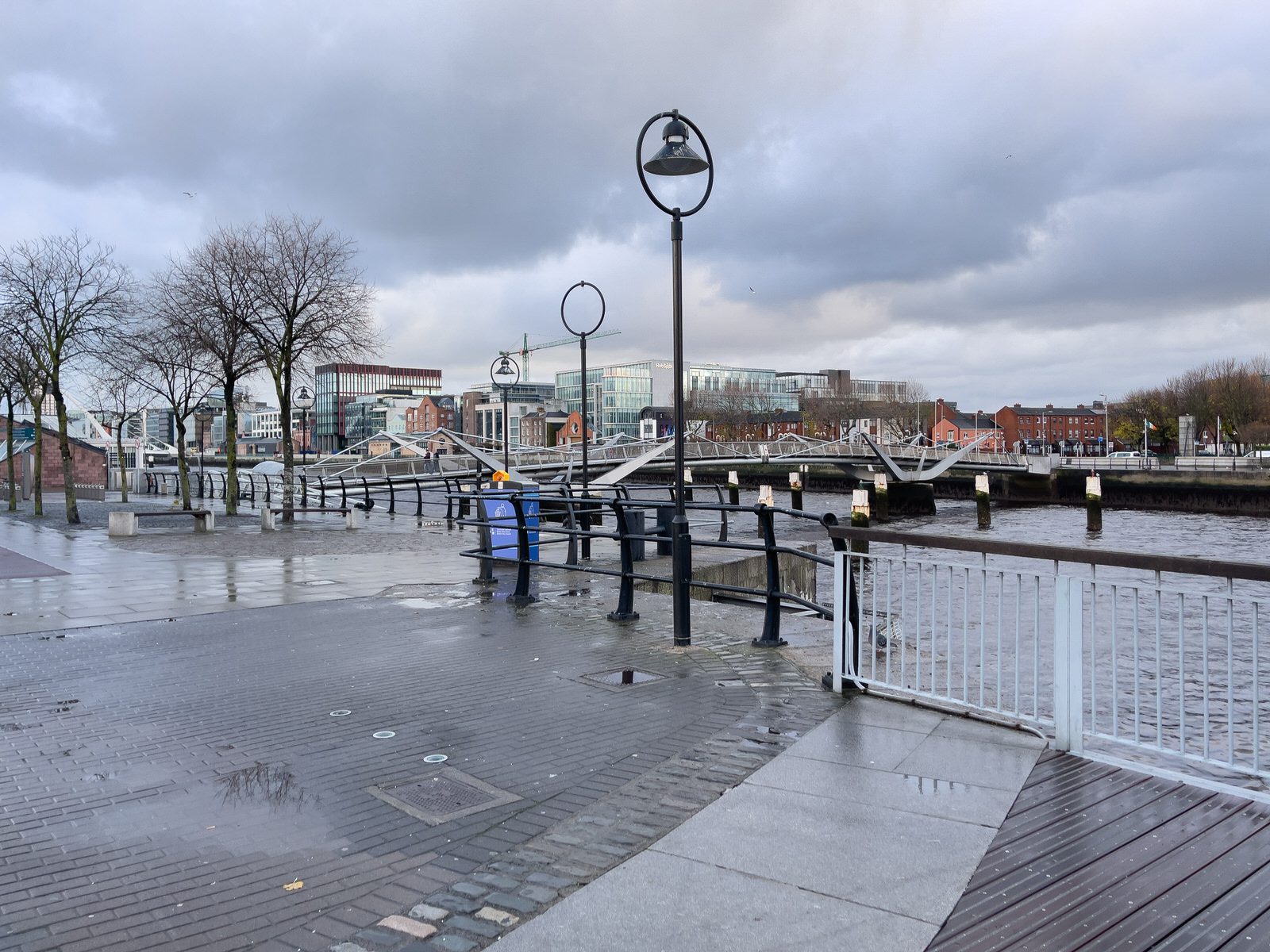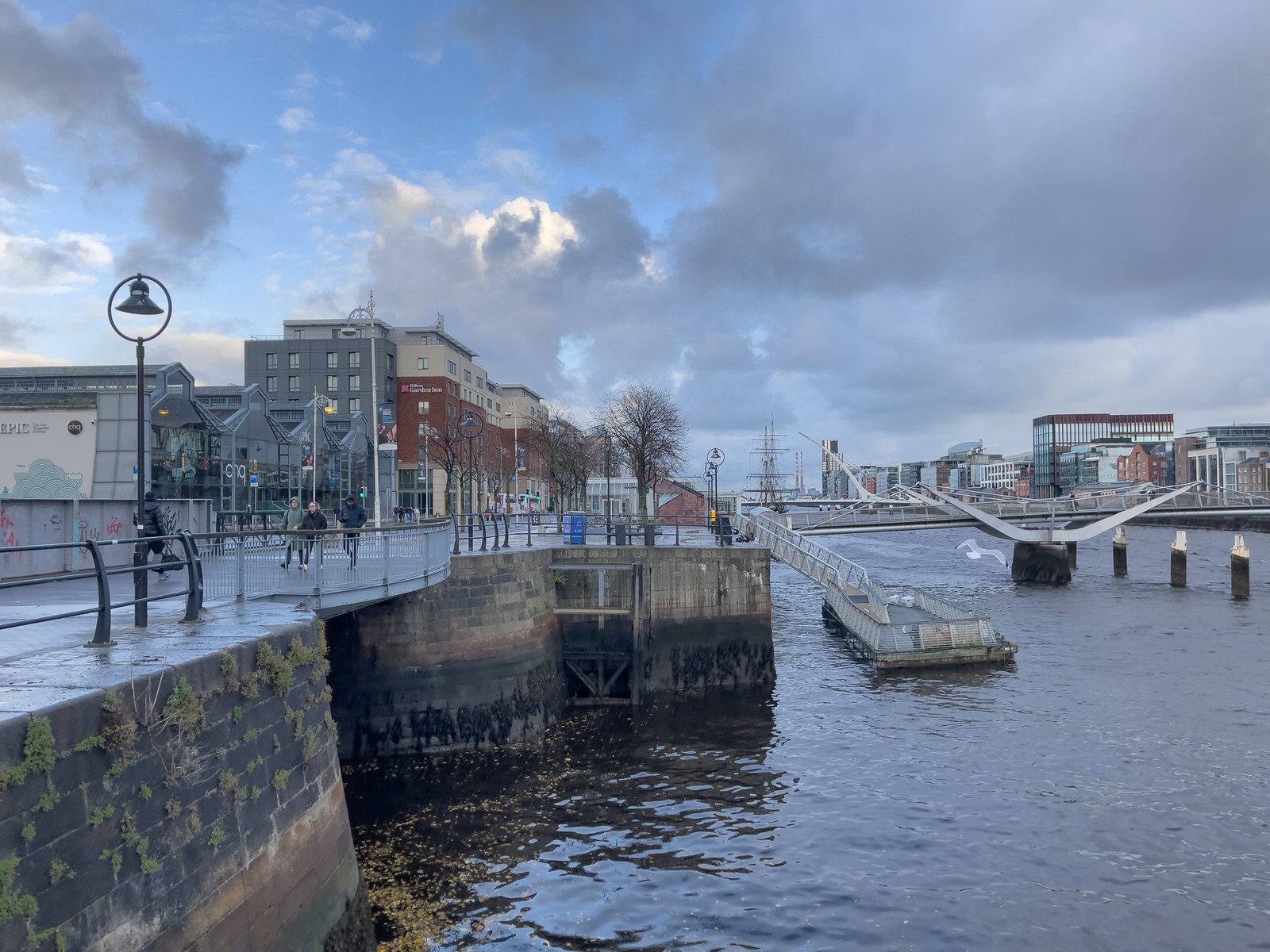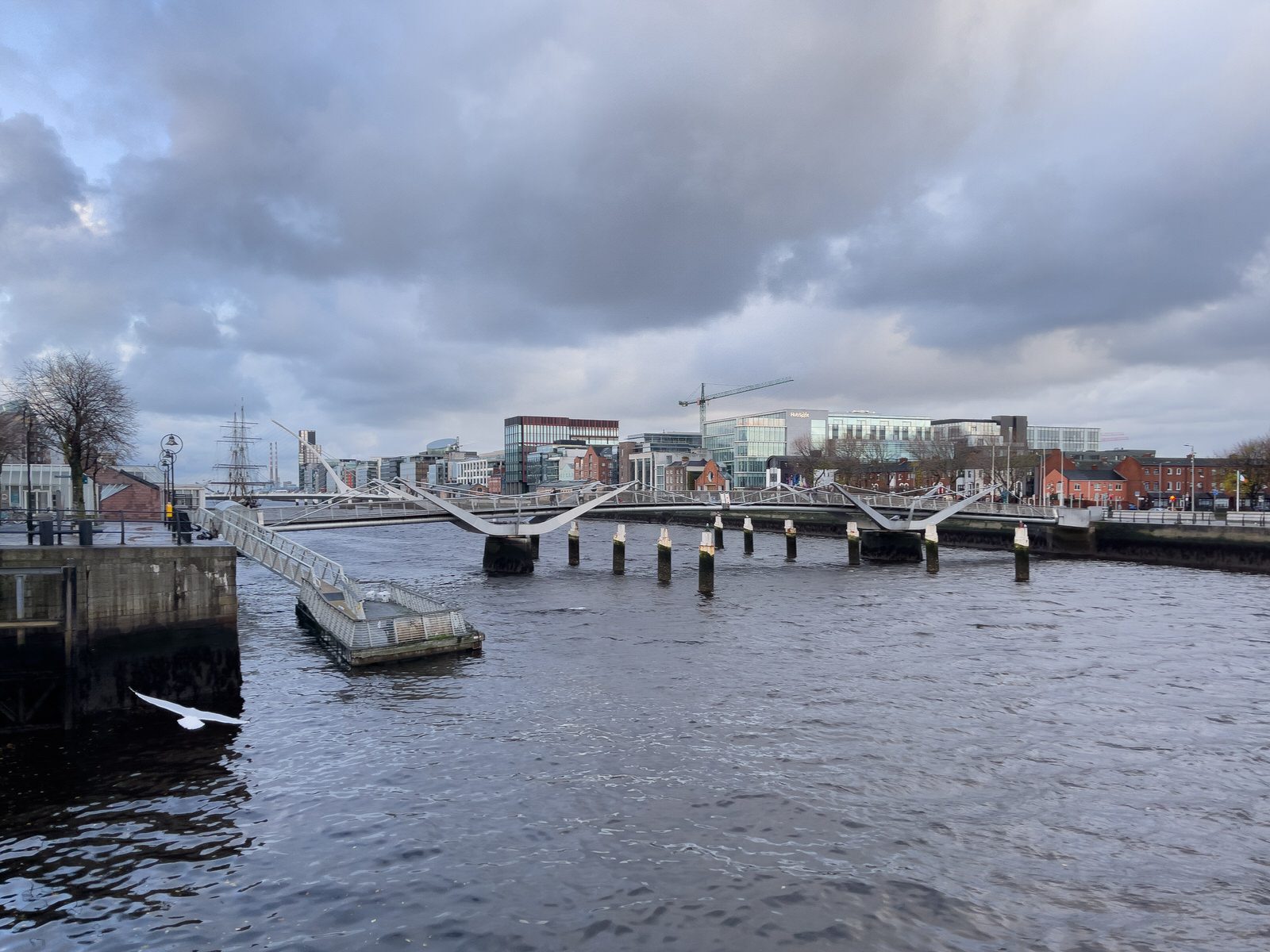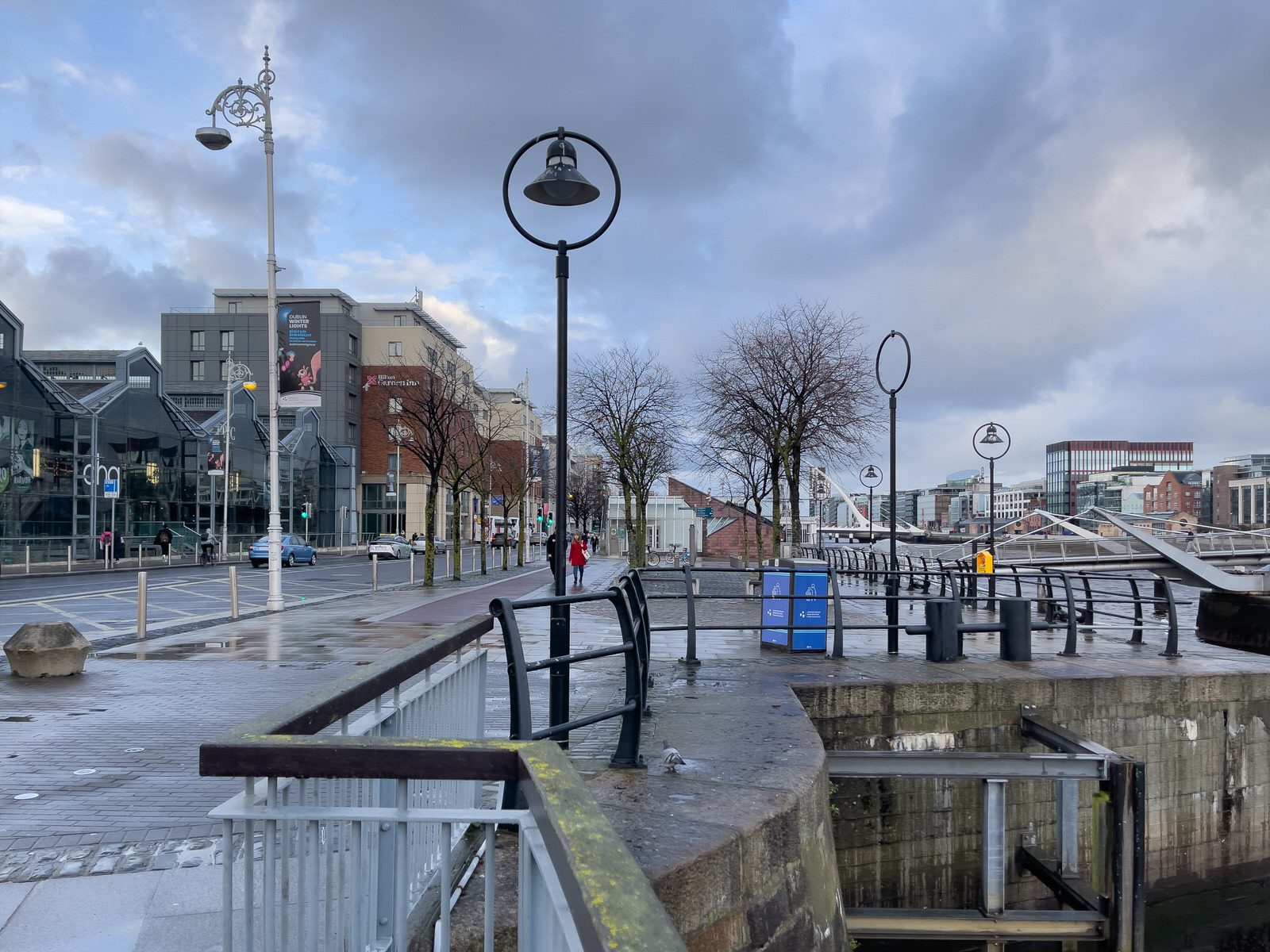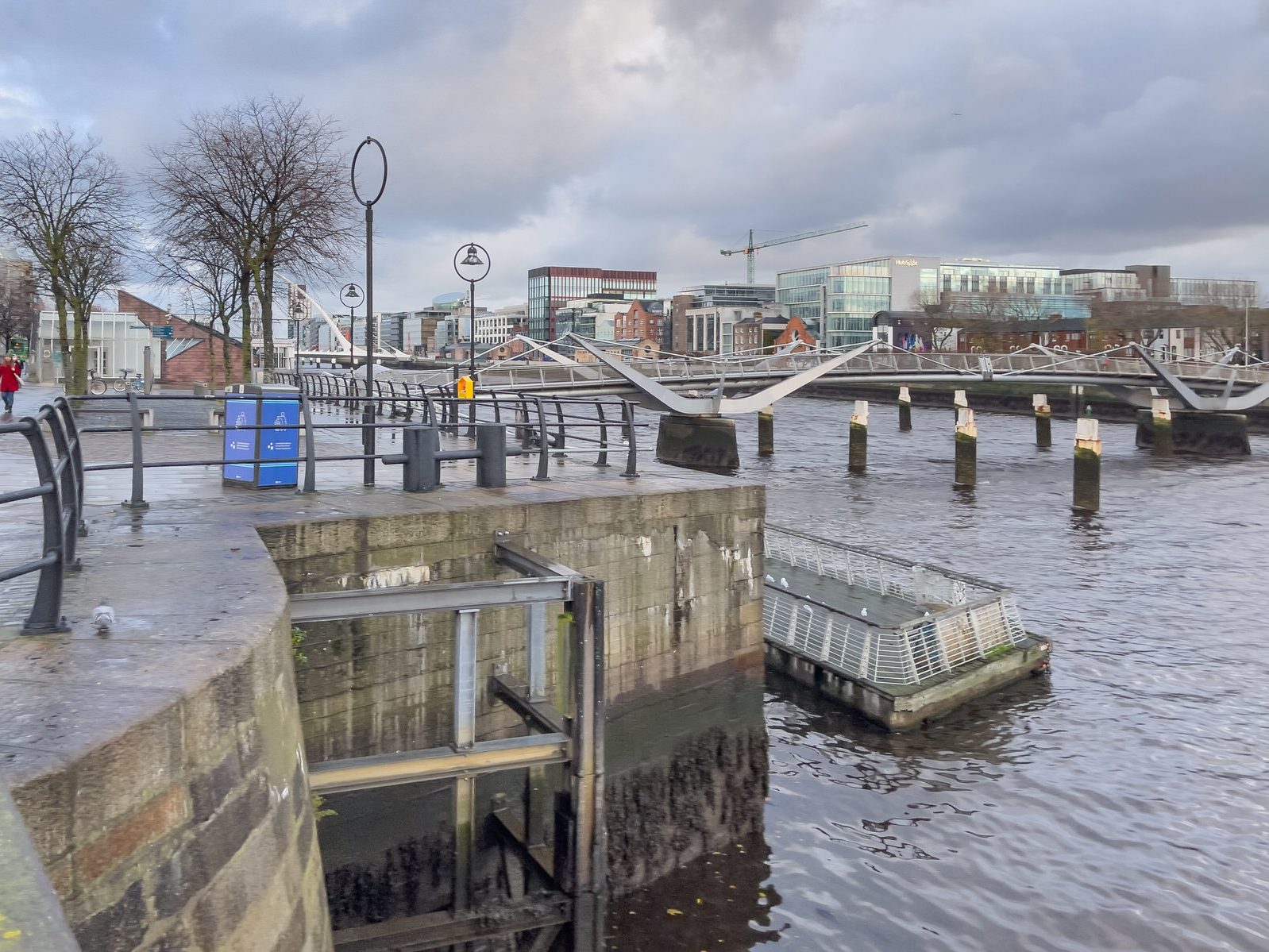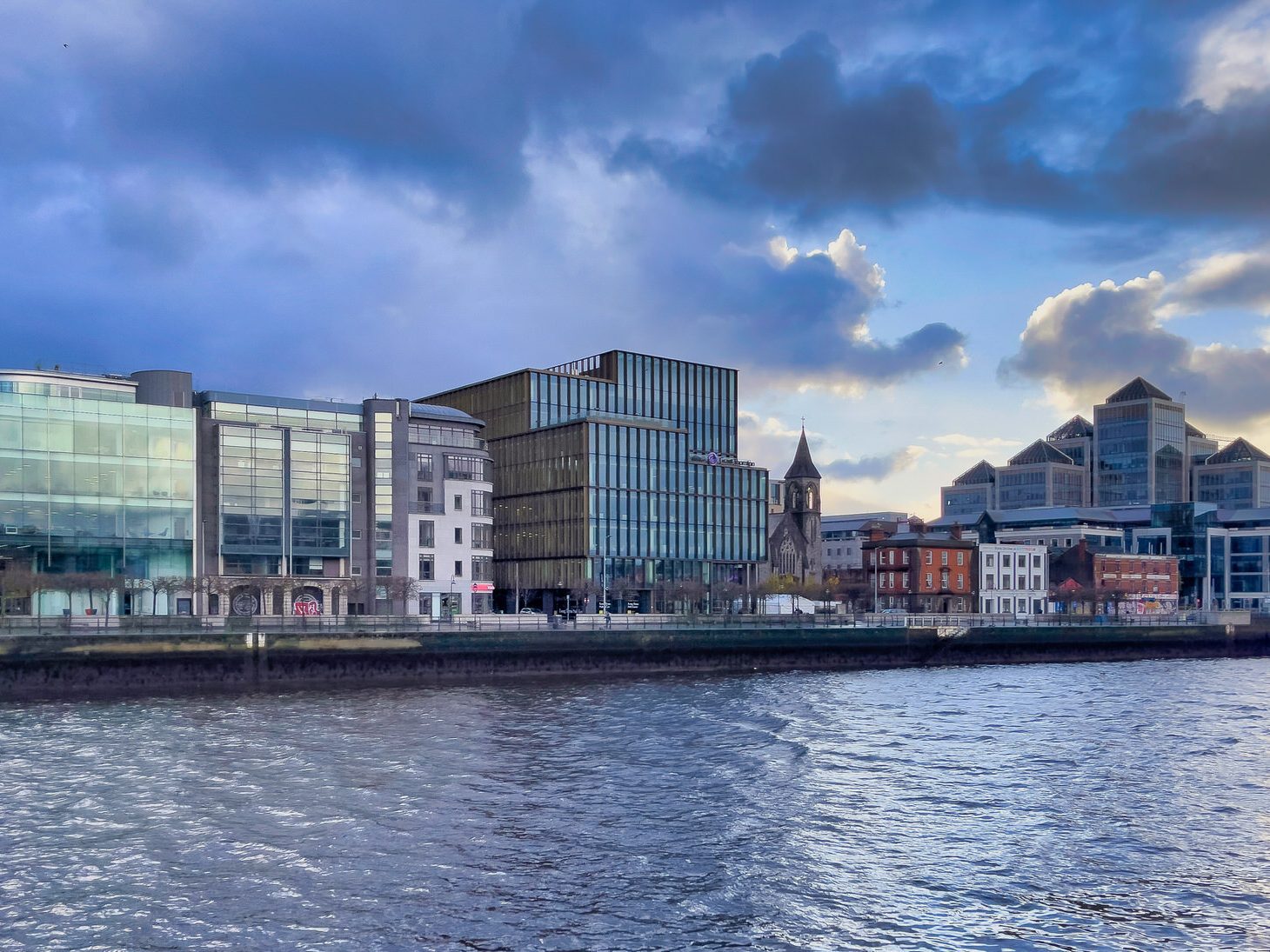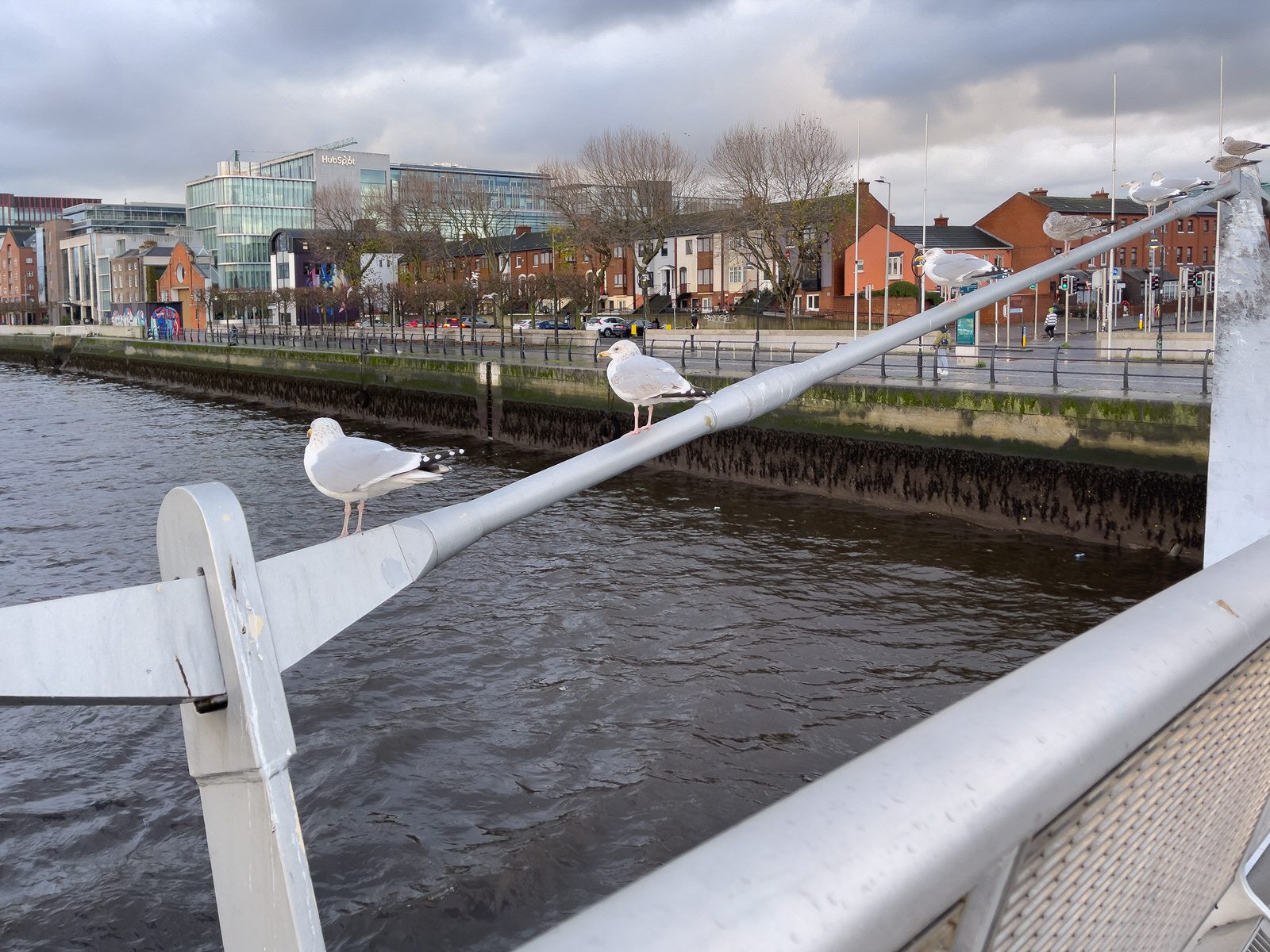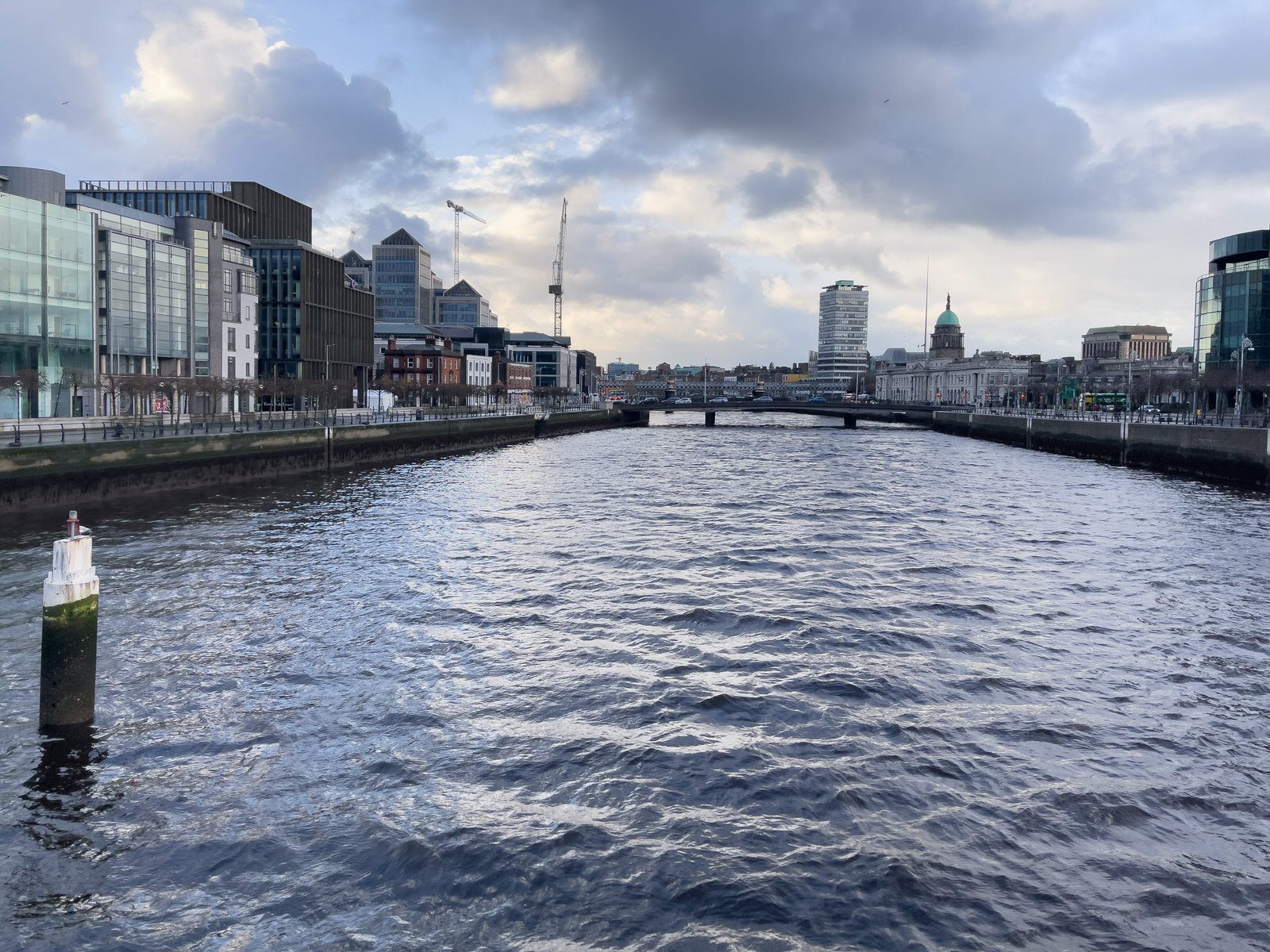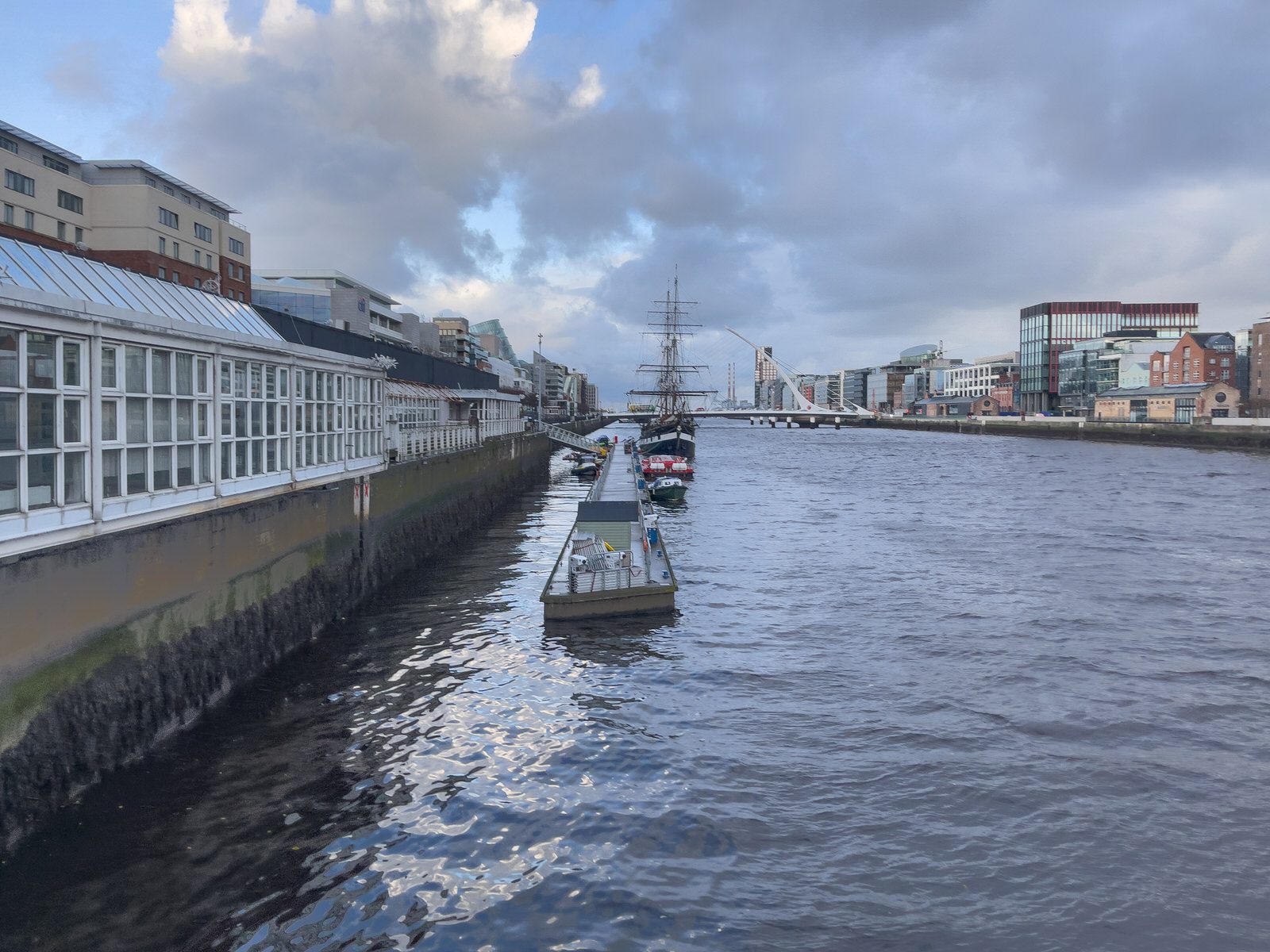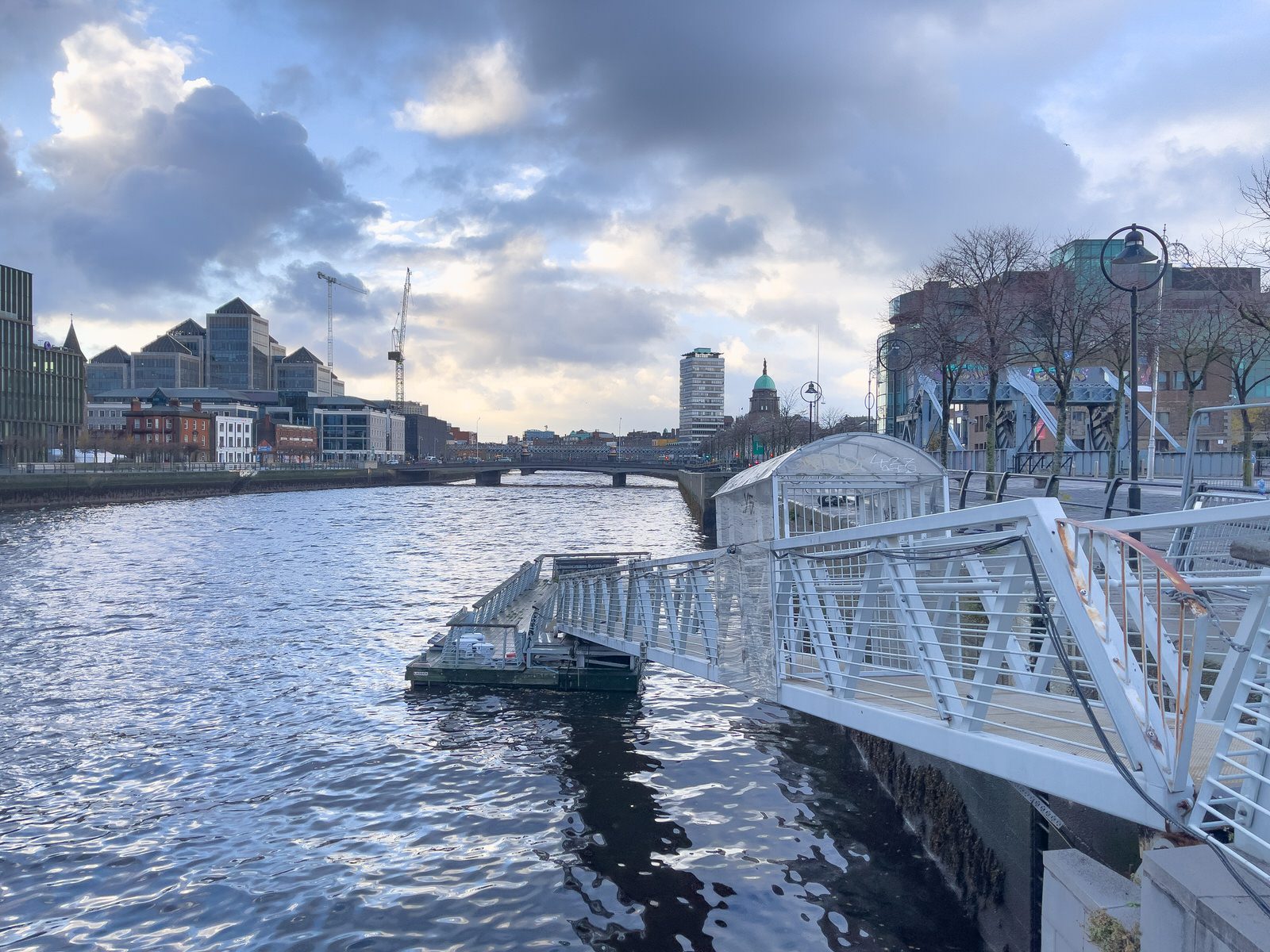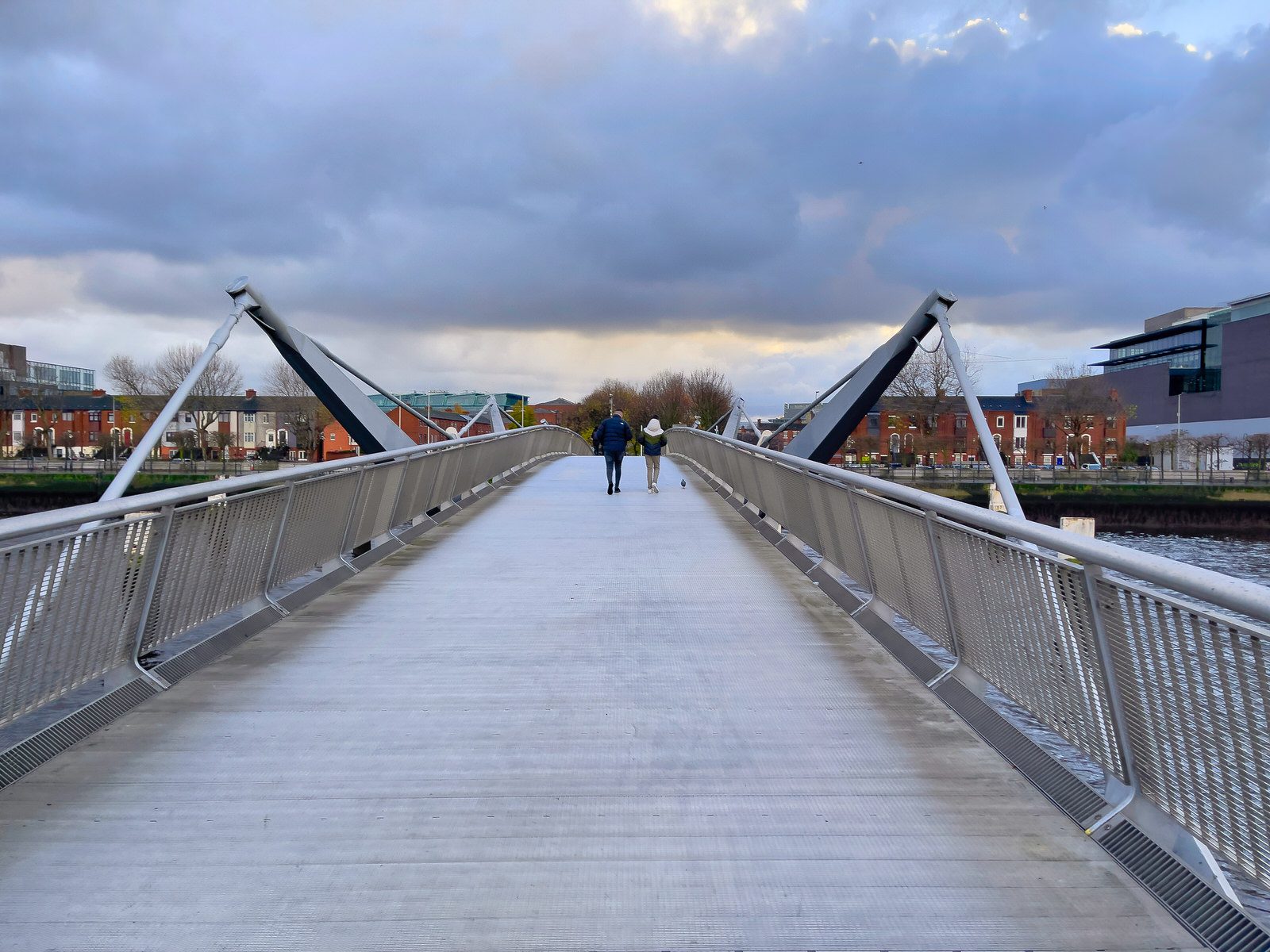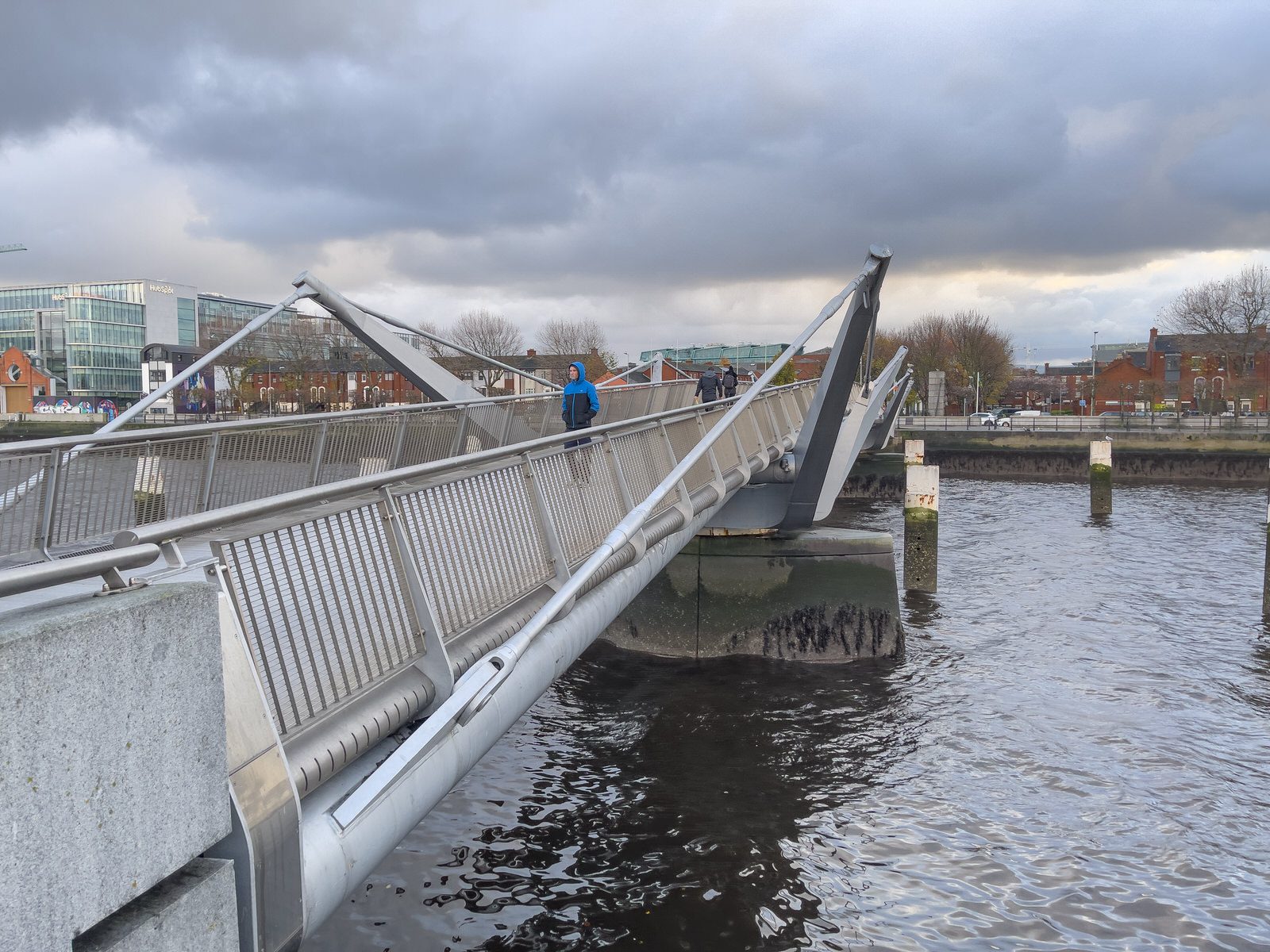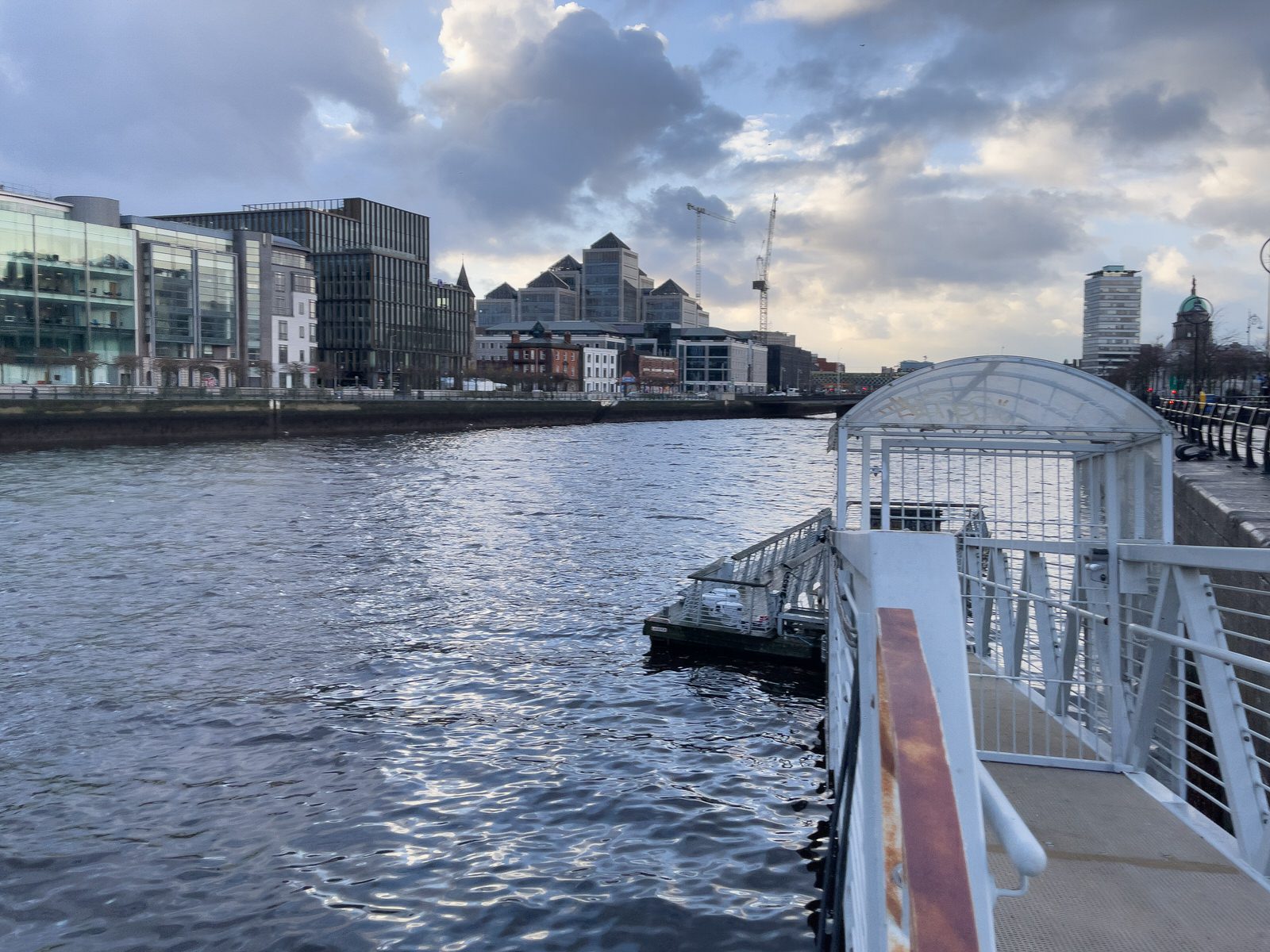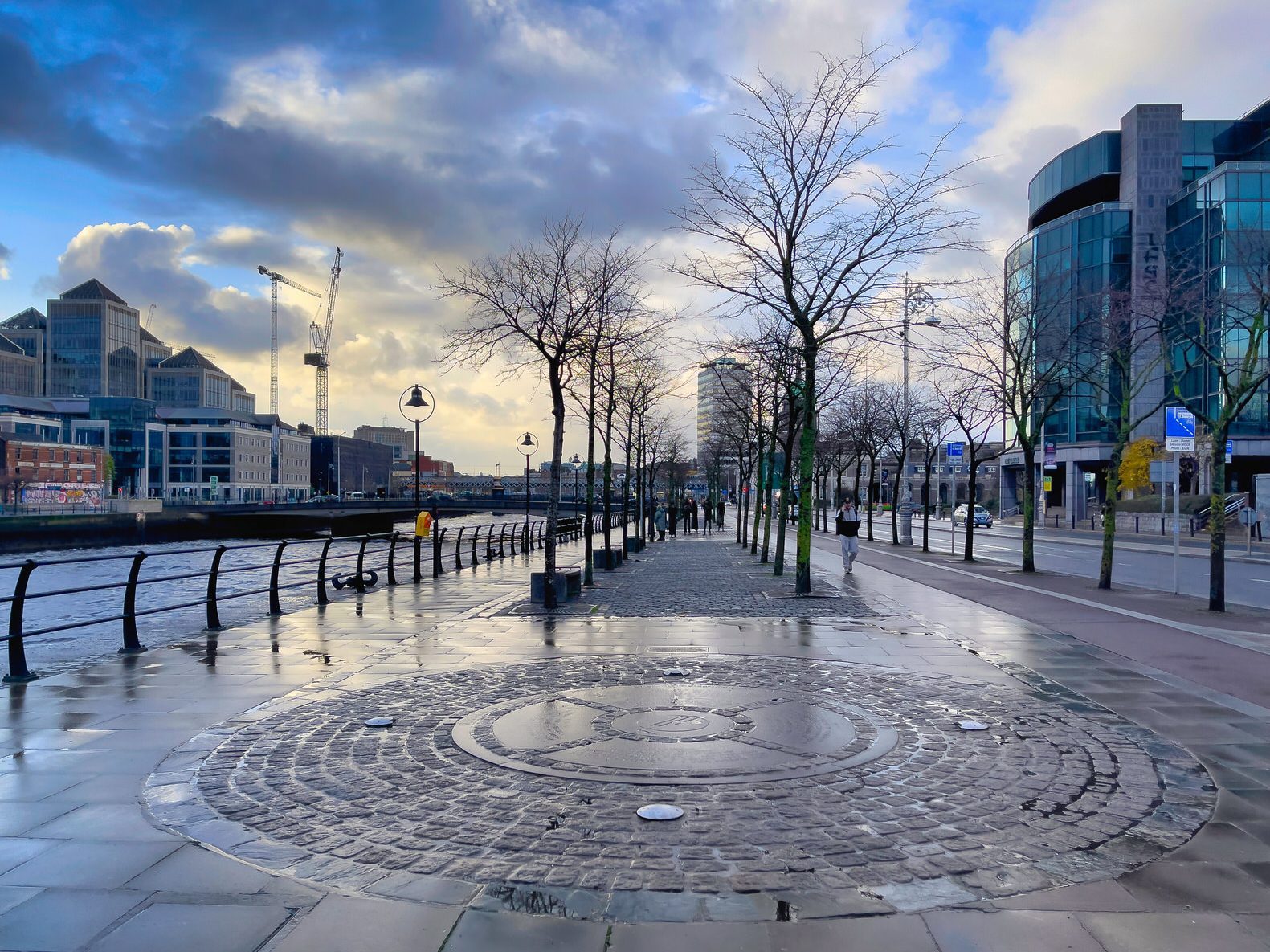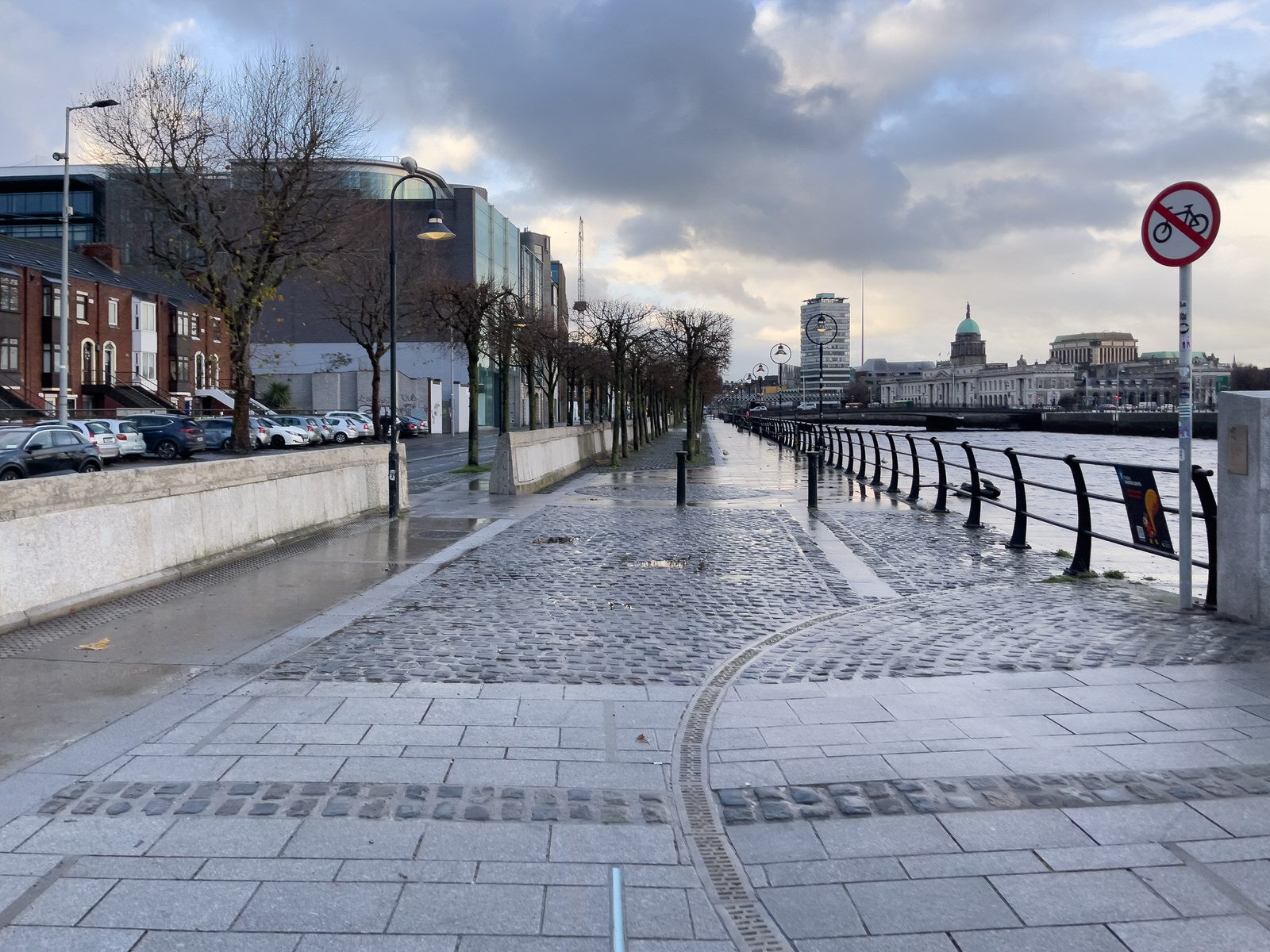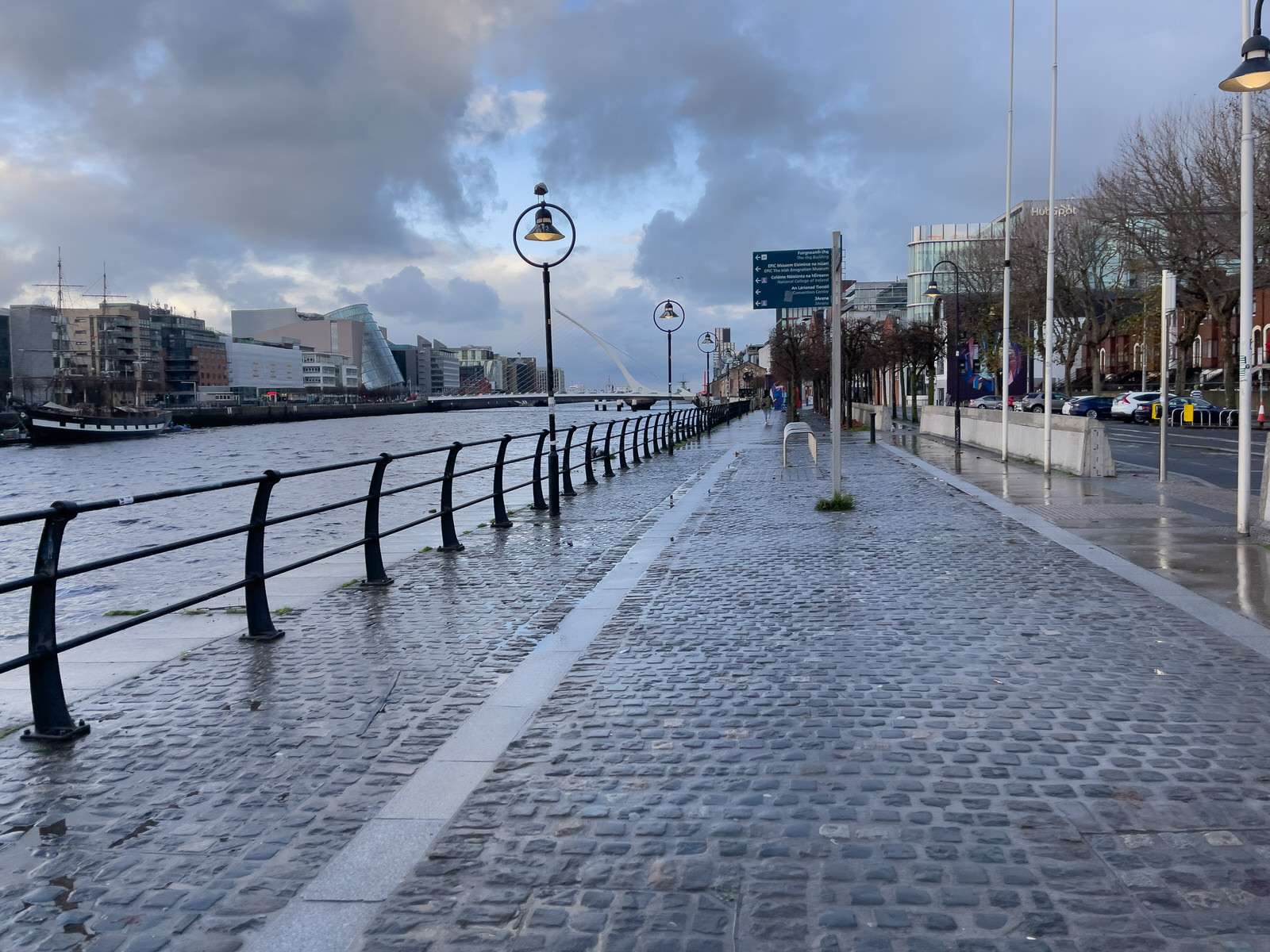CUSTOM HOUSE DOCK DUBLIN
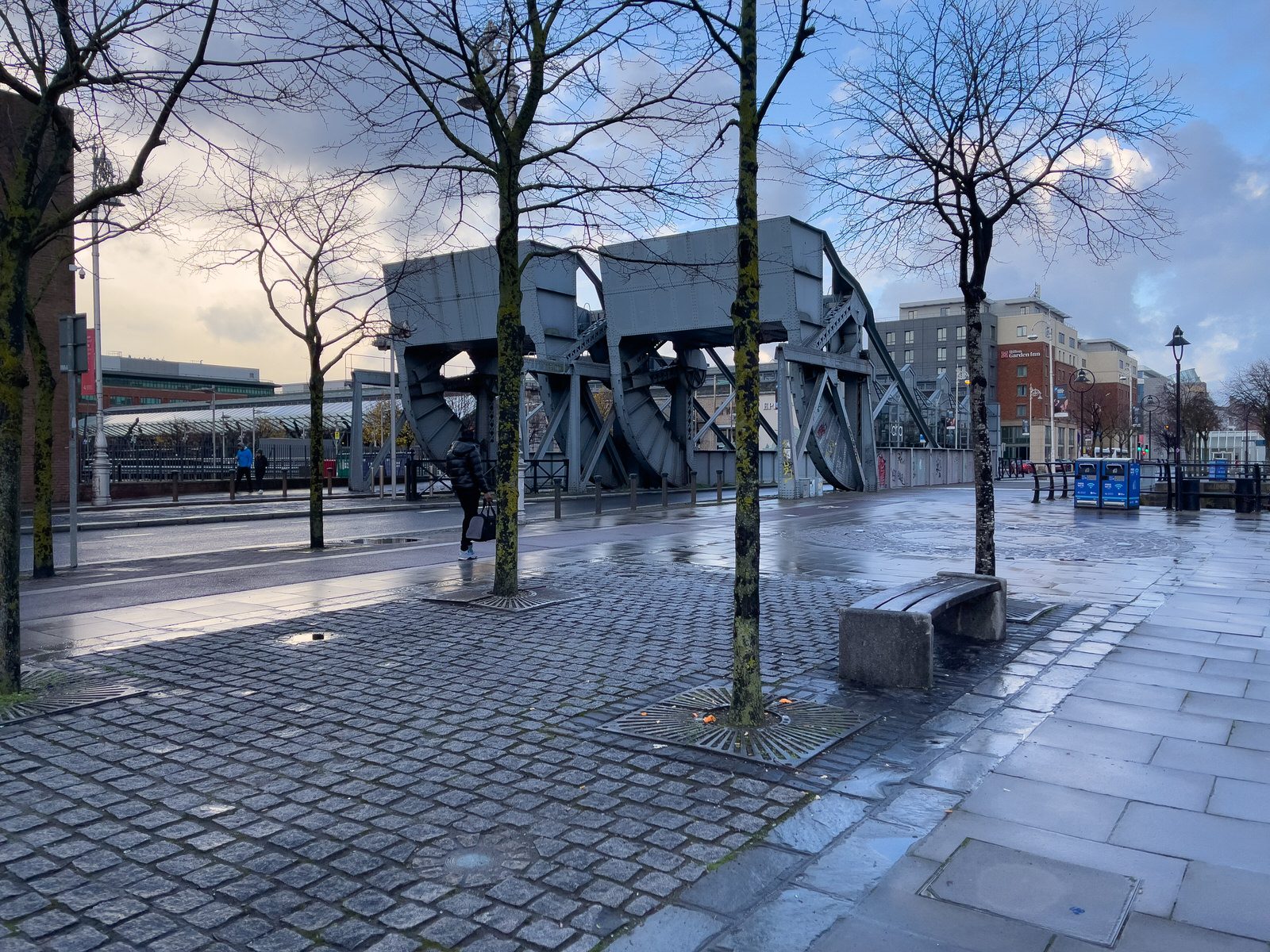
There are two sets of rolling lift bridges along North Wall Quay. One pair sits at the mouth of George’s Dock and Custom House Dock, and the other is beside the Convention Centre, crossing the mouth of the Royal Canal.
The Royal Canal was completed in 1817 and it connected the River Liffey in Dublin to the River Shannon.
At the Dublin end of the canal there is a twin set of lifting bridges (not the ones in my photographs). The bridges were erected in 1912 by the firm of Spencer & Co. of Melksham in Wiltshire to replace a rolling drawbridge placed there by the Midland and Great Western Railway Company in 1860. Sir John Purser Griffith, Chief Engineer of the Dublin Port and Docks Board, based his design on that previously patented in 1893 by William Scherzer of Chicago.
Each bridge consists of two main girders connected together by 14 floor beams, the floor been composed of patented “buckled plates” (an invention of the Irish Engineer, Robert Mallet) resting on and riveted to the floor beams and to the joists fitted between the floor beams. To the western ends of the main girders segmental girders are attached to form the rolling surfaces upon which the bridges bear. The segmental girders are extended so as to carry a large counterweight and the whole structure is suitably braced. To prevent accidental displacement of the bridges on their paths, teeth were formed on the cast steel track plates, and corresponding recesses cut and accurately tooled in the curved track plates of the segmental girders. Each bridge was worked by an electric motor (I think that I has been removed many years ago) , erected on a platform in front of the counterweight box, they could be operated manually in case of power failure.
A similar pair of bridges was erected by Sir William Arroll of Glasgow in 1932 over the entrance to the Custom House Docks further up river. The advantage of twin bridges was that the stoppage of quay traffic when vessels needed to enter or leave the canal system was reduced to a few minutes by alternately raising and lowering each bridge during the locking procedure.
Sir William Arrol (13 February 1839 – 20 February 1913) was a Scottish civil engineer, bridge builder, and Liberal Unionist Party politician. The son of a spinner, Arrol was born in Houston, Renfrewshire, and started work in a cotton mill at only 9 years of age. He started training as a blacksmith by age 13, and went on to learn mechanics and hydraulics at night school. In 1863 he joined a company of bridge manufacturers in Glasgow, but by 1872 he had established his own business, the Dalmarnock Iron Works, in the east end of the city. The business evolved to become Sir William Arrol & Co., a large international civil engineering business.
Projects undertaken by the business under his leadership included the replacement for the Tay Bridge (completed in 1887), the Forth Bridge (completed in 1890) and Tower Bridge (completed in 1894). He was also contracted by the Harland and Wolff Shipyard, Belfast, to construct a large gantry (known as the Arrol Gantry) for the construction of three new super-liners, one of which was called the RMS Titanic.
Arrol was knighted in 1890, and elected as the Liberal Unionist Member of Parliament (MP) for South Ayrshire at the 1895 general election, serving the constituency until 1906. He served as President of The Institution of Engineers and Shipbuilders in Scotland from 1895–97. He spent the latter years of his life on his estate at Seafield House, near Ayr, where he died on 20 February 1913.
